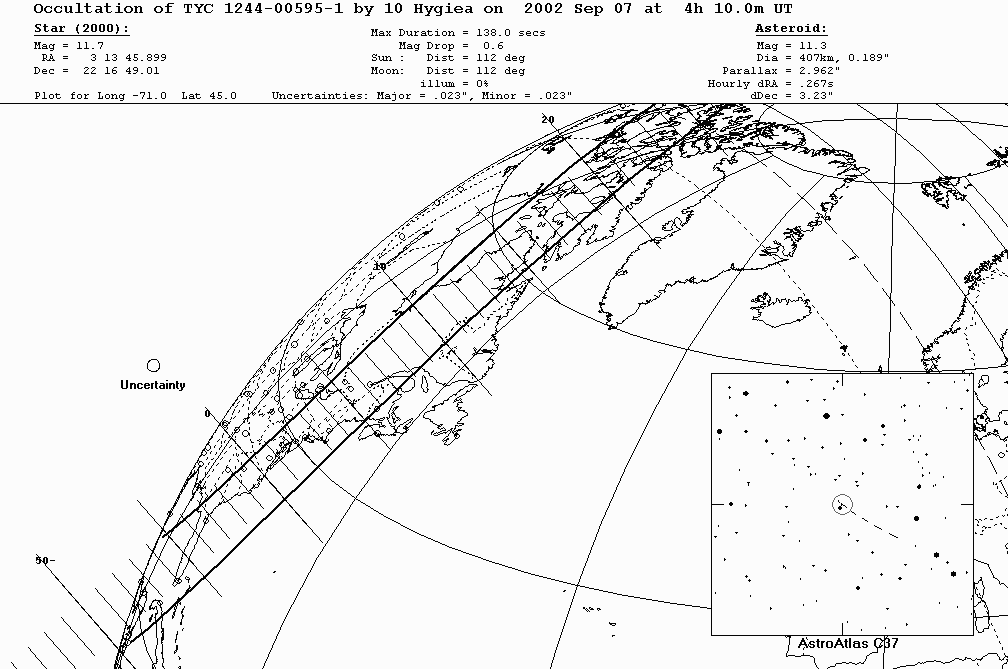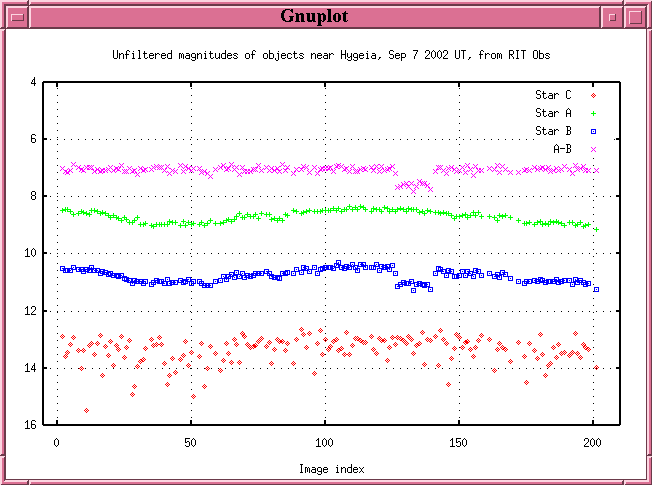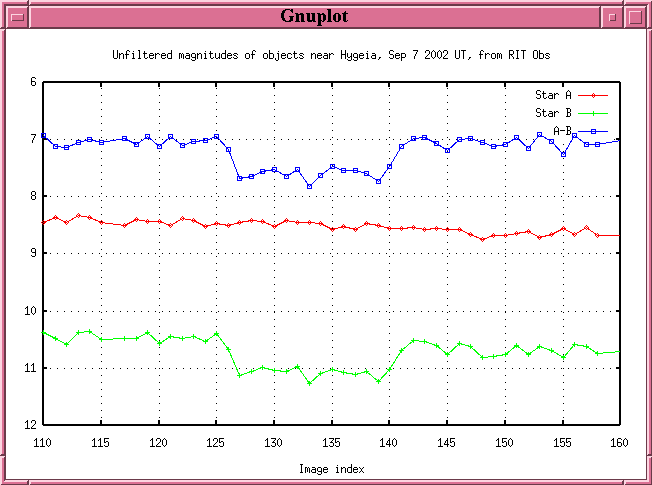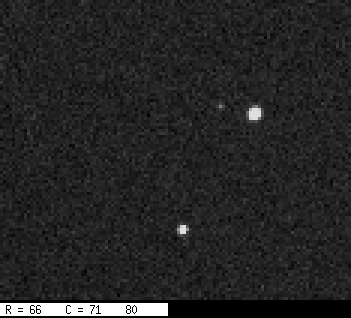
On the night of Sep 6/7, 2002, Tracy Davis and Michael Richmond observed asteroid 10 Hygeia pass in front of the star TYC 1244-00595-1. Hygeia is a large asteroid -- approximately 400 km in diameter -- and so the shadow it casts covers a large area on Earth. You can see the predicted trail of the shadow on this map (taken from the excellent Asteroid Occultation Updates page run by Steve Preston).

The occultation was predicted to last up to 138 seconds, much longer than most. Because the target star was relatively faint, magnitude 11.7, we decided not to use a video camera, but instead take CCD images. Earlier experiments with our intensified video camera on the 10-inch Meade showed that it gives poor results (a scatter of almost 0.2 mag) on stars of tenth magnitude.
In order to take images as rapidly as possible, we binned the chip 3x3 and defined a sub-frame containing only 117 x 100 pixels. Using unfiltered 1-second exposures, we were able to acquire images every 4.2 seconds. Here's a sample image, oriented so North is down and East to the right.

The object at lower left is a combination of the asteroid and TYC 1244-00595-1; the asteroid is slightly brighter (mag 11.3 vs. mag 11.7). The alignment wasn't perfect when this picture was taken; the asteroid hasn't moved in front of the star quite yet. We should see two points of light, very close together. However, the Earth's atmosphere blurs them together into a single blob.
We started taking pictures at UT 2002 Sep 7 03:52:48, and finished at 04:09:32, taking a total of about 200 images. We measured the brightness of all three objects:
Here's a graph showing the magnitude of each object as a function of image index (and you can look up the time corresponding to each index if you want):

The pink crosses show the difference between the magnitude of objects A and B. It's clear that we detected the occultation.
This graph shows a closeup of our measurements around the time of occultation:

Below is an animated GIF made from images spanning the occultation. Can your eye detect the dip in brightness as Hygeia blocks the light of the star?
